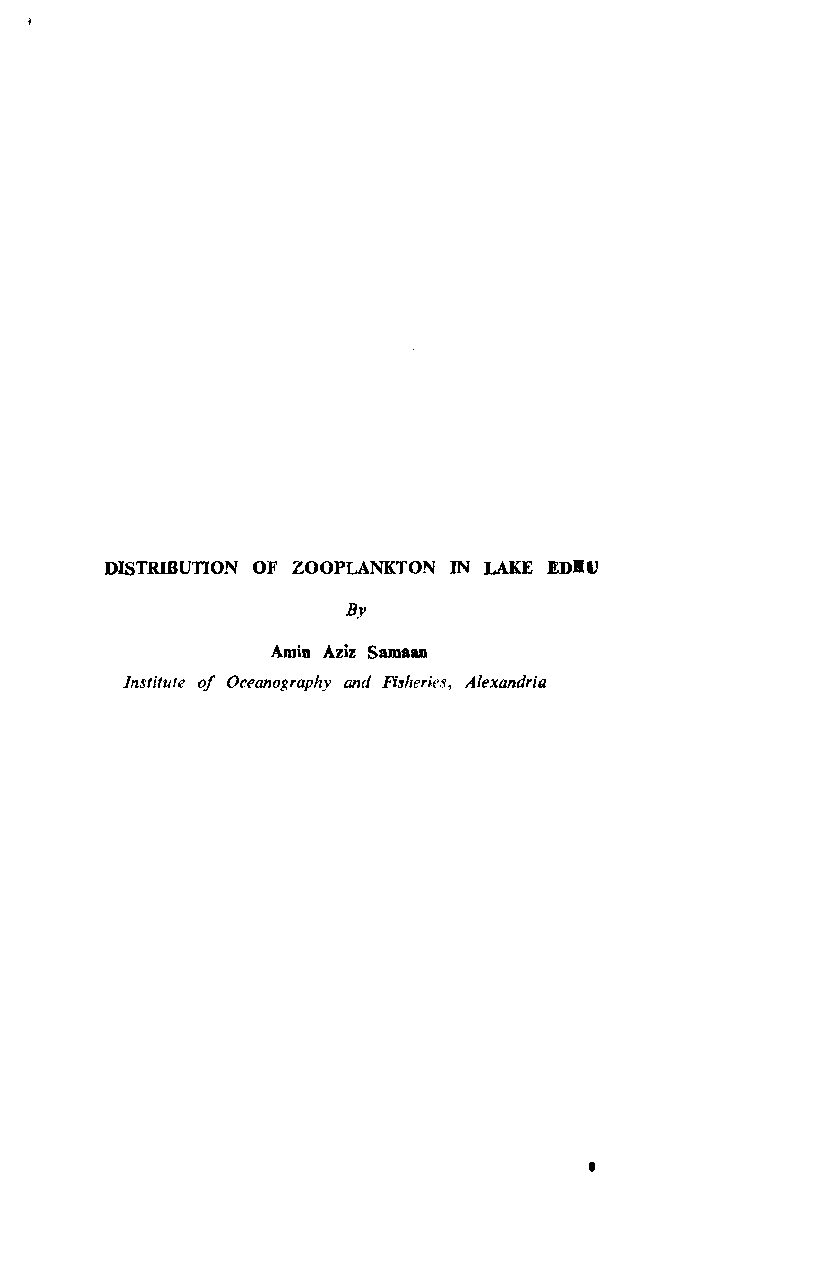Categories
vol-6EULLW£IN OF THE INSTITUTE OF OCEANOGRAPHY & FISHERIES 1S9
SUMMARY
Zooplankton hauls were taken from five stations re
presenting the different habitats in the lake at monthly
intervals from June, 1969 till May, 1970. These comprise station I (the region of the lak ~-sea connection),
stations II and III (the bare area which is divoid of hydrophytes) and stations IV and V (the area covered with
Potamogeton peetinatus). The results of this investigation can be summarised in the following points:
1. The zooplankton community in Lake Edku is
composed mainly of Cladocera, larvae of Cirripedia and
Copepoda. These constituted together about 90.5 %by
number of the total zooplankton. Other plankters of
less frequency include free living nematodes, rotifers,
Gammarus and the chironomid larvae.
2. The distribution of the zooplankton organisms
in the lake was controlled by variations of the water
chlorosity. Thus, the zooplankton at station I was
composed mainly of marine forms particularly the
larvae of Cirripedia. Stations II and III sustained a
mixed community of both marine and fresh water
plantkon. On the other hand the zooplankton at stations
IV and V was represented by fresh water organisms.
3. The maximum distribution of the zooplankton
organisms, in general, was recorded during the winter and
early spring (january-May), while their numbers remained low during the other seasons.
4. Members of Cladocera are fresh water forms.
They constituted about 54.1 % by number of the
total planktonic organisms. Cladocera is represented
mainly by Moina mierura, Alona reetangula and Chydoru3
sphaerieus. The distribution of Moina increased gradually
from station I to station III with the decrease ofthe water
chlorosity and it attained its maximum frequency in January and May, 1970. On the other hand, the distribution
of Alona and Chydorus was confined to the Potamogeton
plant belt. The average numbers of Alona reached a
peak in April and that of Chydorus in Ferbuary.
5. The nauplius larvae of Cirripedia are of marine
origin Tney represented the second important plankters,
constituting about 24.8% by number of the total
zooplankton organisms. Their distribution was confined
to stations I-III. They appeared in the plankton during
the period from Octo~er, 1969 till May, 1970. Their







